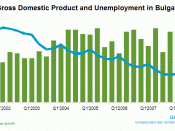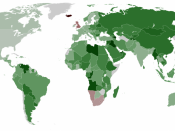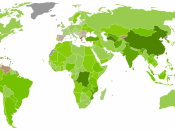Explain how the business cycle model represents the dynamic nature of the modern economy?
The business cycle model is characterized by how economic activity fluctuates over period of time, which includes four phases: upswing, boom, downswing and trough (it can develop into recession or even a depression if the economic condition is deteriorating without government interruption to carry out adequate fiscal and monetary policy). An upswing tends to increase output, income, employment and expenditure until the peak or boom where it will then turn into a downswing. Booms are periods of time where the rate of economic growth is at its maximum level and the employment rate, output, income and expenditure are maximized as well. After a boom period, the economy tends to move into a downswing. At this phase, the growth rate for output and income will decrease to nearby the lowest point due to the declining level of expenditure which leads to an increase in the unemployment rate, and consequently, the economy will drop down into a trough resulting in minimum level of output, income and expenditure.
On the contrast, the unemployment rate will be at its peak. The diagram of business cycle model (see Diagram 1 below) indicates the general trends in economic activity.
Gross Domestic Product (GDP) is the market value of total recognized official goods and services that have been produced in a year or a particular period of time, which is a very critical indicator helping to analyze how well this economy was going on during the given period of time. Comparing to the real GDP, it isn't adjusted by inflation so that it couldn't reflect the real accurate living standard. The diagram below illustrates the Japanese real GDP growth from 2002 to 2013.
As we can see from this...


